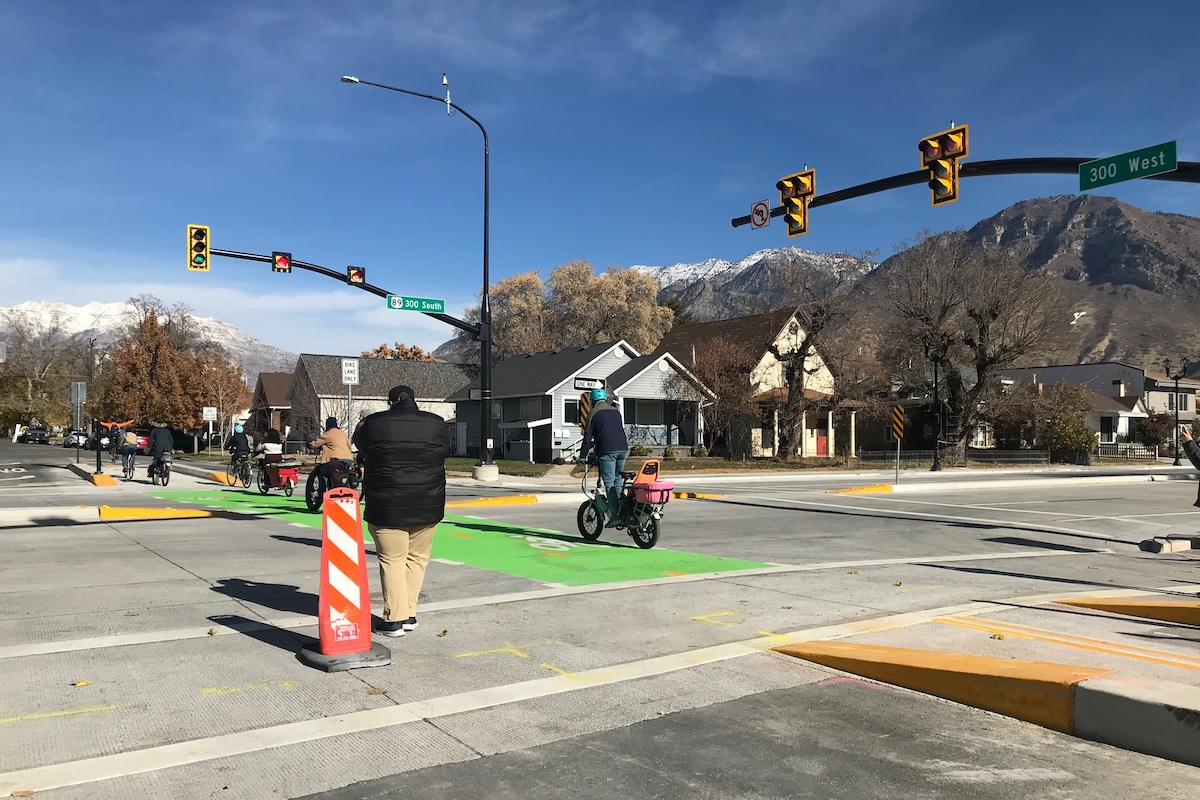“The majority of work on I-285 and on SR 400 is anticipated to be complete by the end of 2023,” says Marlo Clowers, Alternative Delivery Program Manager for GDOT. “Final work items, such as surface paving, striping and intelligent transportation system connections will follow.”
GDOT let the project as a design-build-finance (DBF) public-private partnership, because “it allowed efficient use of available public funding. DBF requires the developer to finance amounts above the available public funding in a fiscal year.”
The department awarded the contract to North Perimeter Contractors (NPC) of Atlanta, a subsidiary of Ferrovial Agroman US Corp., of Austin, Texas, in 2015. Construction began in February 2017. After awarding the contract, GDOT added three bridge replacements to the project. The completion of new exits and connecting lanes have made the bridge replacement process much less intrusive to drivers.
Louis Berger Group of Morristown, New Jersey, serves as the engineer of record for I-285, and Neel-Shaffer with offices in Atlanta the SR 400 portion of the project. HNTB, with offices in Atlanta, serves as GDOT’s program management consultant.

| Your local Volvo Construction Equipment dealer |
|---|
| Faris Machinery |
Recent traffic data reported in March 2023 approximately 729,000 vehicles traveled on I-285 eastbound near Riverside Drive in a week-long span and roughly 775,000 vehicles traveled on I-285 westbound near Chamblee Dunwoody Road. The principal interchange of I-285 and SR 400 is located between these interchanges as well as three other local interchanges on I-285: Ashford Dunwoody Road to the east, Roswell Road to the west on I-285, and the Glenridge Connector just south of I-285 on SR 400.
The work includes constructing 32 bridges, 20 within the core interchange. Multiple foundations and girders have been used, including drilled shafts, steel piles and spread footing foundations, and concrete and steel girders.
“Connecting lanes have opened up, which have helped reduce conflict points and enhance safety,” Clowers says. “Exit points have shifted, which requires motorists to make decisions to exit sooner then they originally did.”
The Abernathy diverging diamond interchange opened in April 2023. The interchange crosses traffic to the opposite side of the road to reduce potential points of conflict and improve traffic flow.
“Maintaining traffic flow on the interstate and the local road network while replacing three I-285 mainline bridges and reconstructing the principal interchange creates a significant challenge,” Clowers says.
Crews also have completed Phase 1 for three mainline I-285 bridges: over Glenridge Drive, SR 400, and Peachtree Dunwoody Road. Crews demolished and rebuilt the interior portions of the three structures.
“The bridges over Glenridge Drive and Peachtree Dunwoody required many utility relocations as well as lengthening seven other bridges to meet the City of Sandy Springs master plan for these roadways,” Clowers reports.
Crews also recently began replacing the I-285 bridge deck over Lake Forrest Drive, which should take three or four months to finish.
Reconstruction work on Peachtree Dunwoody Road also has begun.
“Once construction is complete, there will be six lanes total between Lake Hearn and north of the freeway,” Clowers says. “A new shared-use path will be constructed along the west side and new sidewalks along the east side.”
Several streams and manmade lakes exist within the project limits, and the developer has maintained the water quality and controlled erosion. Crews have installed exclusionary flaps in culverts to reduce impacts to federally protected birds.
Symbolic boundaries for people of the Jewish faith exist along SR 400 and has created challenges for the project team.
“Three Eruvin are located within the project limits,” Clowers says. “The leaders of each Eruv have been very cooperative with our work effort and the developer has been very responsive. If an issue arises it is addressed to the satisfaction of all.”
“There have been many traffic-pattern changes. However, access to the hospitals for all patients, visitors, suppliers and staff has been consistently maintained,” Clowers says.
GDOT has communicated the staging and where work will take place each week through outreach to key stakeholders and the traveling public. The communication team also obtains drone footage of project activities to update the public.
“Our team has coordinated with different navigation app services including GA 511, Waze, Google Maps, and Apple Maps,” Clowers says. “When possible, we recommend motorists utilize their preferred navigation app to determine the best way around the closures. As always, apps and mobile devices should be used ‘hands free’ in Georgia, per state law.”
GDOT anticipates the project will wrap up by the end of the year. At that time, motorists will enjoy smoother travel through this busy area in Metro Atlanta.











































































